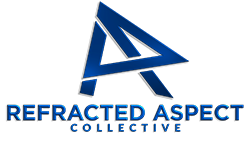
In the vehicles sector, the question of how consistent your customer experience is cannot be overstated. Every client interaction, from initial communication to final follow-through, shapes trust and loyalty. When this consistency falters, it creates a tangible drag on growth and reputation. This article explores the operational realities behind this challenge and what it means for leadership navigating a competitive and regulated market.
- Understanding the Operational Tension in Customer Experience Consistency
- When a Single Customer Interaction Reveals Systemic Gaps
- How Inconsistency Creates Friction Across Business Functions
- The Root Cause: Embedded Decision Habits That Perpetuate Inconsistency
- The First Meaningful Shift Toward Consistency
- The Most Common Friction Point That Slows Progress
- How Inconsistency Feels in Daily Operations
- Frequently Asked Questions
- Reframing Customer Experience Consistency as a Strategic Imperative
- Partnering for Strategic Clarity in Vehicles Businesses
Understanding the Operational Tension in Customer Experience Consistency
Leaders in vehicles businesses face a persistent challenge: ensuring that every customer receives the same level of quality, communication, and follow-through. This is not a matter of occasional lapses but a systemic tension that quietly undermines trust and repeat business.
The pressure comes from balancing regulatory compliance, fluctuating market demands, and the need to maintain operational efficiency. When customer experience varies, it signals deeper issues in process control and resource allocation. This inconsistency is not just a customer service problem; it is an operational risk that impacts revenue and brand equity.
In boardroom discussions, this tension often surfaces as a question of scalability and control. How do you maintain a uniform experience when each client’s needs and interactions differ? The answer lies in recognizing that inconsistency is a symptom of fragmented workflows and unclear accountability, which are costly to ignore.
When a Single Customer Interaction Reveals Systemic Gaps
Consider a scenario where a vehicle customization order for a hunting outfitter stalls mid-process. The client receives conflicting updates from sales and service teams, and the promised delivery timeline slips without clear explanation. This situation is common but rarely isolated.
Here, the operational tension is clear: the breakdown in communication and follow-through is not due to a single failure but a recurring bottleneck between departments. The sales team commits to timelines without full visibility into production capacity, while service teams scramble to manage expectations without updated information.
This disconnect creates a ripple effect. The client’s trust erodes, internal teams expend extra effort to patch communication gaps, and leadership faces pressure to resolve issues that should have been prevented. This scenario captures the quiet cost of inconsistent customer experience—lost time, strained relationships, and missed opportunities.
How Inconsistency Creates Friction Across Business Functions
The inconsistency in customer experience often fractures workflows between sales, operations, and customer service. Sales teams may overpromise to secure deals, unaware of operational constraints that delay delivery or service. Operations, in turn, face pressure to meet unrealistic deadlines, leading to shortcuts or errors.
Customer service becomes the buffer, managing client dissatisfaction and attempting to realign expectations. This misalignment creates inefficiencies that compound over time, as teams work in silos rather than collaboratively. The result is a cycle of reactive problem-solving instead of proactive management.
Leadership may not immediately see these connections, but the drag on productivity and morale is real. The friction slows decision-making, increases operational costs, and ultimately impacts the bottom line. Recognizing these interdependencies is critical to addressing the root causes of inconsistency.
The Root Cause: Embedded Decision Habits That Perpetuate Inconsistency
At the heart of inconsistent customer experience is a decision habit embedded in daily operations: the acceptance of exceptions as the norm. Teams routinely make ad hoc decisions to work around process gaps rather than addressing the underlying issues.
This habit becomes a structural flaw. Instead of standardized communication protocols and clear accountability, the business relies on individual effort and informal coordination. Over time, this creates variability in how clients are managed and how promises are fulfilled.
Even capable teams fall into this pattern because it offers short-term relief from pressure. The real challenge is that these workarounds become invisible to leadership until the consequences—lost clients, damaged reputation—are undeniable. Shifting this mindset requires recognizing that inconsistency is not a byproduct of complexity but a choice embedded in operational habits.
The First Meaningful Shift Toward Consistency
The initial step to improving customer experience consistency is a deliberate decision to standardize communication and accountability. This does not mean rigid scripts or excessive bureaucracy but establishing clear checkpoints where information is verified and commitments are aligned.
For a vehicles business under real constraints, this shift might look like defining who owns each stage of the customer journey and ensuring that updates flow through a single, reliable channel. It requires leadership to prioritize clarity over speed and to accept that some short-term friction is necessary to build long-term trust.
This adjustment is practical and achievable without overhauling the entire operation. It sets a foundation for consistent experience by reducing ambiguity and empowering teams to deliver on promises with confidence.
The Most Common Friction Point That Slows Progress
The biggest barrier to improving consistency is the tendency to defer difficult conversations about accountability. When teams resist clarifying roles or hesitate to enforce standards, progress stalls. This manifests as stalled decisions, unclear ownership of customer touchpoints, and a culture of “we’ll fix it later.”
Operationally, this creates pressure on frontline staff who juggle conflicting priorities and unclear expectations. Leadership feels the strain as issues resurface repeatedly without resolution. The delay in addressing accountability is not a lack of will but a reluctance to confront the discomfort of change amid ongoing business demands.
How Inconsistency Feels in Daily Operations
In the day-to-day, inconsistency shows up as repeated friction in handoffs between teams. Sales might promise a delivery date that operations cannot meet, leading to last-minute scrambling. Customer service fields complaints that could have been avoided with clearer communication.
There are frequent offhand remarks like “we’ll deal with that later” or “this client is different,” signaling a tolerance for exceptions that undermines standardization. Manual fixes become routine, and recurring complaints from certain client segments go unaddressed.
This environment breeds frustration and fatigue. Teams work harder to compensate for systemic gaps, but the underlying problem remains. The business runs fast but never quite catches up to delivering a consistent experience.
Frequently Asked Questions
Why do we keep seeing different customer experiences even though our team is skilled?
Skill alone doesn’t guarantee consistency. The issue often lies in how decisions are made daily—if teams rely on informal workarounds instead of standardized processes, variability creeps in. Skilled employees adapt, but without clear protocols, their efforts produce uneven results.
How can we hold teams accountable without creating more bureaucracy?
Accountability doesn’t require layers of oversight. It starts with clear ownership of customer touchpoints and simple, reliable communication channels. When everyone knows their role and how it connects to the next step, accountability becomes a natural part of workflow rather than an added burden.
What’s the risk if we ignore these inconsistencies for now?
Ignoring inconsistency leads to eroding client trust, increased operational costs, and lost revenue. Over time, the business will face more frequent complaints, higher churn, and difficulty scaling. The cost is not just financial but also reputational, which is harder to rebuild.
How do we start improving without disrupting current operations?
Begin with small, focused changes that clarify communication and ownership. For example, standardize updates at key customer milestones. This approach minimizes disruption while building a foundation for more consistent experience over time.
Why do some clients seem to get better service than others?
This usually reflects internal inconsistencies rather than intentional favoritism. When processes are unclear, teams prioritize based on familiarity or urgency, creating uneven experiences. Addressing process clarity helps ensure all clients receive the same level of attention and follow-through.
Reframing Customer Experience Consistency as a Strategic Imperative
Consistency in customer experience is not a peripheral concern; it is central to sustaining trust and competitive advantage in vehicles businesses. The cost of unresolved inconsistency is tangible—lost clients, operational inefficiencies, and diminished brand strength.
Progress looks like clear accountability, aligned communication, and predictable delivery. This requires a shift in perspective: viewing customer experience as an operational discipline rather than a variable outcome. Leaders who embrace this see their business not just as a collection of transactions but as a system where every interaction matters.
Addressing this question is one of many strategic challenges, but it is foundational. Without it, other improvements struggle to take hold. With it, the business gains a platform for sustainable growth and resilience.
Partnering for Strategic Clarity in Vehicles Businesses
Refracted Aspect works closely with leaders in the vehicles category of the Shooting, Hunting & Outdoor Trades to bring clarity to complex internal dynamics. We understand the operational pressures, market constraints, and strategic challenges unique to this sector.
Our approach combines structured diagnostics with strategic guidance that respects your industry knowledge while providing an outside perspective on internal challenges. We don’t offer generic advice or quick fixes. Instead, we help you identify the critical shifts that align your team and processes for consistent customer experience.
If you’re ready to explore practical next steps with a peer who understands your business environment, consider taking the next step and Book a Discovery Call. This conversation is designed to provide strategic clarity tailored to your specific operational realities and growth ambitions.
















